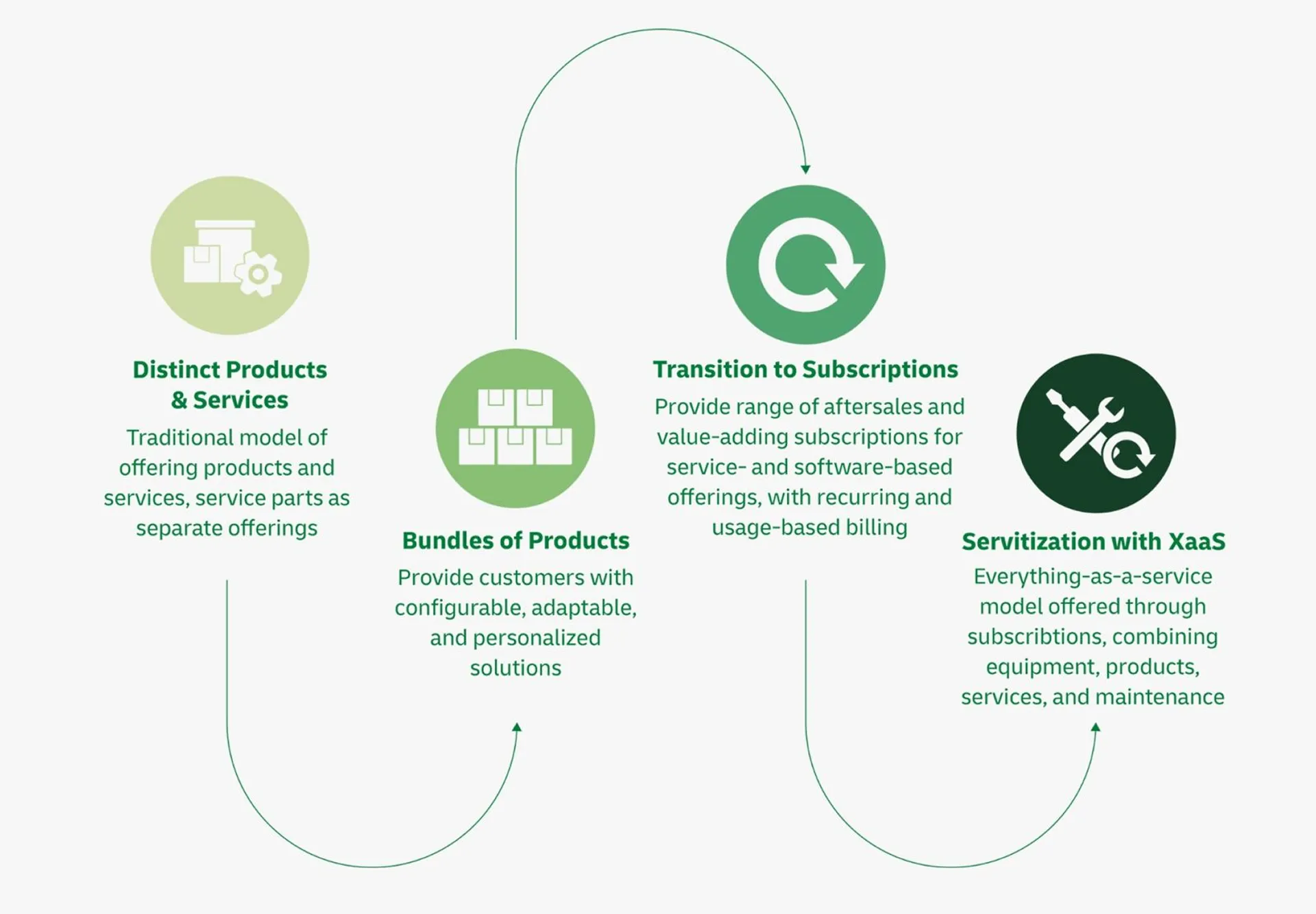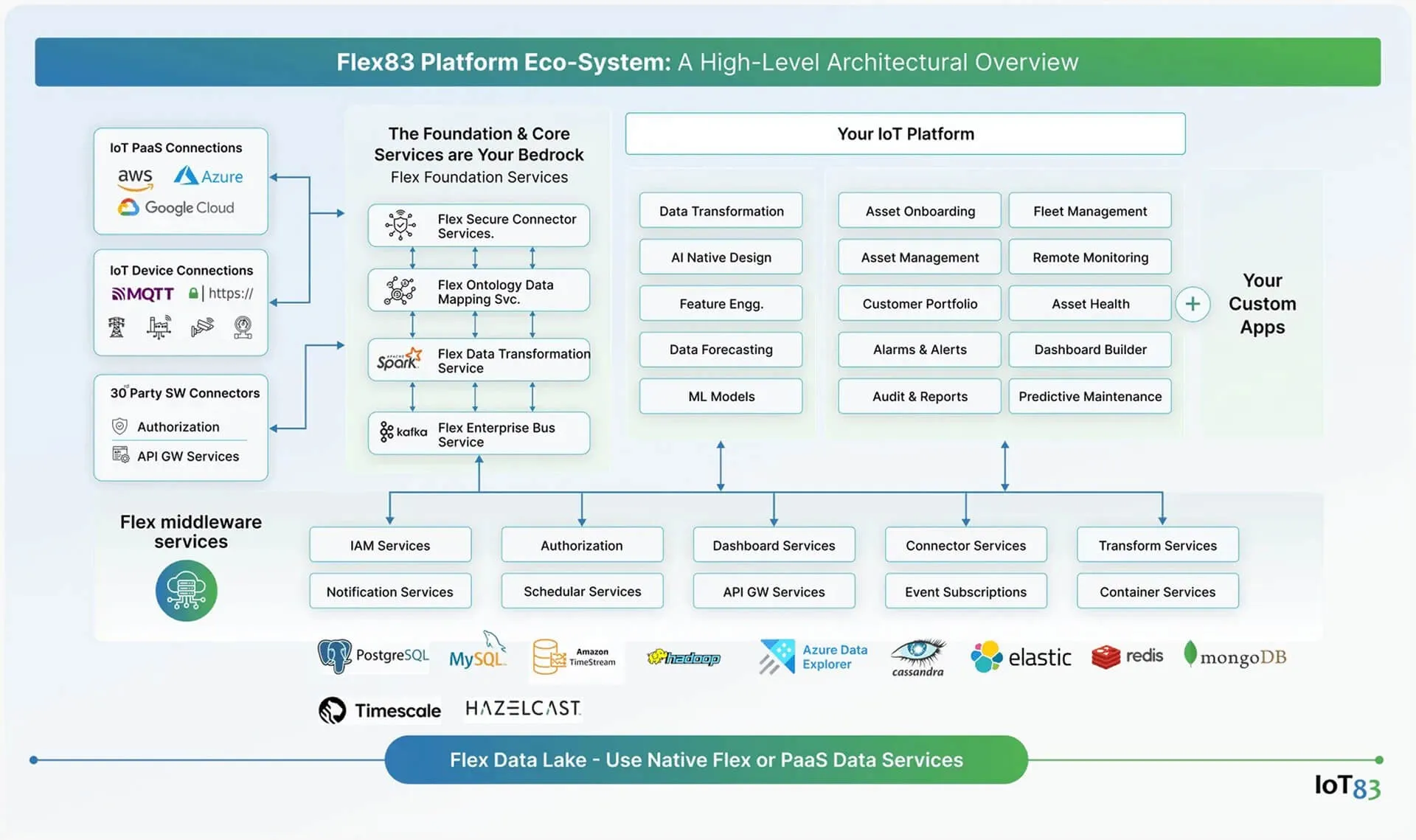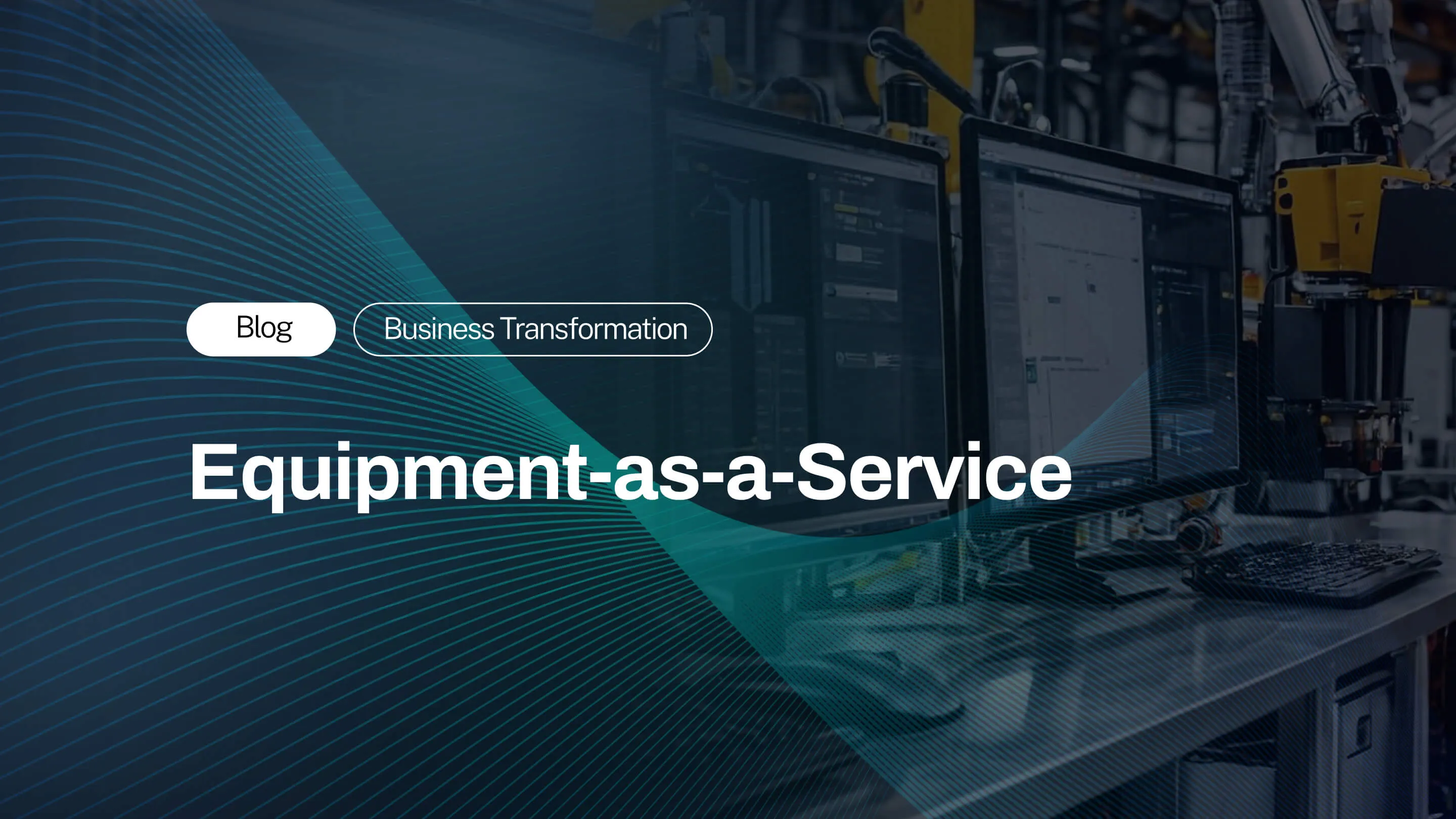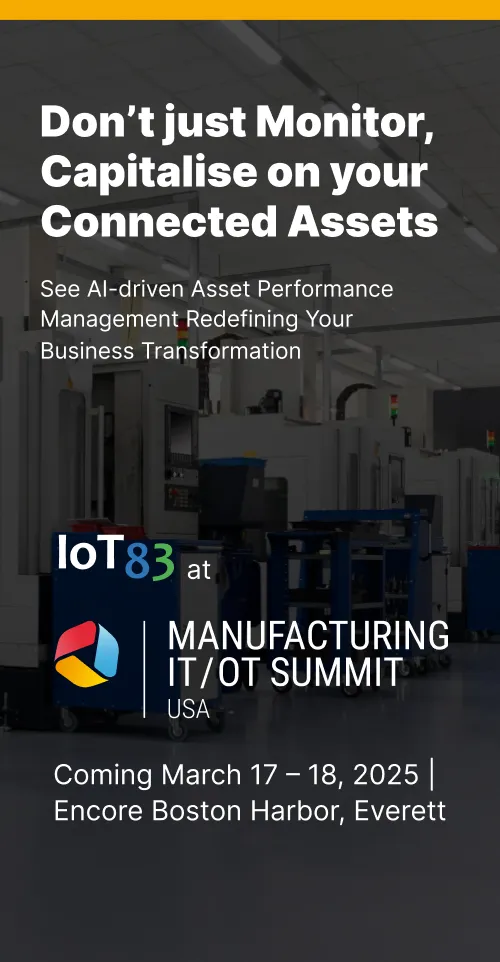Why are modern manufacturers talking about value-added services more than ever?
Because the game has changed.
Decades ago, if you were invited to walk the halls of any major OEM, success for them was getting their product out the door—on time, within specifications, and under budget. After the sale, the asset was out of their sight and of course, out of mind. Service and support were afterthoughts, were easily seen as cost centres or obligations to be met, not opportunities to be seized.
Now, let’s fast forward the situation to today: The rules have flipped. Now, the ones leading the journey think about the real question: What happens after the asset sale—how you support, connect, and serve your customer. In fact, it’s not just a differentiator; it’s fast becoming the core business model for those who want to thrive in their businesses.
Read the article to explore why value-added services—especially Equipment-as-a-Service (EaaS), AIoT-driven predictive maintenance, and outcome-based business models—are reshaping manufacturing, and how forward-thinking OEMs are using Application Enablement Platforms to own this transformation. We’ll dig into the latest research, real-world success stories, and practical steps to get started.
A Seismic Shift from Product to Service; Going from Old to New Model
The Old Model
If we go three decades back, the typical industrial OEMs’ sale ended at delivery. For example: A manufacturer sold smart meters, it was delivered to the customer, and gradually the relationship with the customer faded until the next purchase or a warranty claim. After the meters were out of the door, the manufacturer had no clue about what happened to the meters until and unless the customer returned with another set of requirements of smart meters. In those days, the OEMs relied on the volume, the decisions were reactive, and no scope of after market revenue.
The New Model: Ownership to Outcomes
With the rising competition, faster product cycles, and customers' expectations, modern OEMs have no option but to be the best. Why? Because they are under relentless margin pressure and their customers demand for more transparency and stronger partnerships.

“Optimize my energy use or Help me predict the failure of my machine before it's too late,” are a few references of the customers’ needs. If you say no, you leave the revenue that’s already served for you in the platter.
As per McKinsey report, the manufacturers who has prioritized aftermarket services saw twice the shareholder return as compared to those who did not.
Why EaaS Now?
1. The Rise of EaaS (Equipment as a Service)
Equipment as a service is more than just a term; it’s a revolution that enables the Industrial OEMs to remain the owner of their assets. The customer’s role in this? They pay for hours of operations, generated kilowatts, produced parts, etc, and also for the assets. As Deloitte says, “EaaS is transforming the way industrial companies do business by enabling them to create deeper, resilient relationships with their customers.”
Why EaaS matters to modern OEMs?
- Recurring revenue: The Industrial OEMs can generate recurring revenue rather than just product sale revenue.
- Continuous improvements: When the manufacturers know what the customers want, they can create better products. With evolving technologies like AI, ML, and big data, it is easier to modify the products as per the customer needs.
- Customer relationships: With improved products, frequent touchpoints with the customers, they build a long-term relationship, ensuring they not just stay as the product providers but become service providers.
2. The Tech Catalyst
The final piece? Technology.
Without modern IoT connectivity, data orchestration, and powerful cloud-agnostic platforms, EaaS would be little more than a dream.
But today’s Application Enablement Platforms (like Flex83) and AIoT platforms are built for seamless device onboarding, secure remote monitoring, real-time analytics, and the ability to deploy new services—at scale, across the globe.
Modern IoT platforms enable:
- Predictive Maintenance: Stopping failures before they start, with AI and ML that learn from every connected device.
- Remote Diagnostics: Support assets and customers anywhere, instantly.
- Usage-Based Billing: Automate “as-a-service” business models—no spreadsheets required.
- Integration with Business Systems: Connect IoT data to ERP, CRM, and service platforms for end-to-end automation.
3. Budding Customer relationships
Years ago, B2C paved the way for aftermarket and services. You have bought a watch, and you know how you can get the replacement straps for watches, sunglasses, etc. This is becoming the new go-to for industrial manufacturers as they are catching up on the value-added services trend. In a world like today where asset uptime is equivalent to added money, manufacturers aim to sign long-term contracts and pay-per-use models that acts as an incentive for everyone.
Real-World Stories Where Value-Added Services Are Winning
1. A Fortune 500 Manufacturer Moves from Sales to Service
Consider the case of a major industrial OEM. Ten years ago, they sold large-scale assets and waited for customers to call with issues. But as their industry matured, price competition ate into margins, and new competitors emerged with flexible, digital-first business models.
The response?
They partnered with a leading Application Enablement Platform provider to launch their own EaaS offering.
Within 18 months:
- The service contracts rose by 60%
- Recurring revenue grew 4x
- Improved customer satisfaction
- Detected and fixed issues with AI and ML
2. An Energy Solutions Leader Delivers More Than Power
A European energy Industrial OEM realized that “selling more meters” was a dead end. Instead, they built out a suite of value-added services—remote monitoring, predictive maintenance, and usage insights delivered via a white-labelled AIoT platform.
The result:
Customers who signed up for the new services saw energy costs drop by 12% on average, while the OEM grew their service revenue by 25% in just one year.
Read more here: https://www.iot83.com/case-studies
What Industrial OEMs Need to Know
1. The ROI Is Real: Investing in Equipment as a Service is never a bad decision. According to IoT Analytics, nearly 60% of the industrial OEMs plan to launch new as-a-service offerings in the next one year.
2. Customers Expect More: OEMs customers do not want to spend on just the asset anymore. What they want is transparency, guaranteed uptime, and a partner who solves their problems.
3. Technology Is No Longer a Barrier: With the technological advancements, modern AIoT platforms and Application Enablement Platforms, you can launch new services in weeks, not years.
4. Servitization Is the New Standard: It’s not just about Equipment as a Service. Modern OEMs are bundling remote support, AI-driven insights, consumables, and warranty extensions—creating a “digital moat” around their business.
How to Get Started with EaaS
1. Start Small, Scale Fast
EaaS is not something that you can achieve overnight. Start small, scale fast should be your mantra. For example, start with predictive maintenance for a key product line, then test with different use cases. First know the value it brings, then try to scale.
2. Invest in the Right Platform

Investing in the right platform should be your priority, from day one. Look for an AIOT platform that is:
- Cloud-agnostic: You can deploy it on the cloud of your choice
- Built for scale: You can handle millions of endpoints
- Flexible: You can integrate it easily with your business systems
- Secure: You can be rest assured about crucial data’s privacy and security
3. Build a Culture of Service
Shifting an entire business model to something else is not easy. The shift from product sales to outcome-based services isn’t just about technology but it also about the team, the people, and the mindset. Start training your sales team, service engineers, and product teams to think about the customers and move ahead from just selling the assets to selling outcomes.
Overcoming the Hurdles
Let’s just be honest here, moving to equipment-as-a-service doesn’t come without its obstacles. With requirements around change management, solving data complexity, shift from legacy IoT, and business model transition, it is yet a far-fetched dream for many. But, sitting back is also not an option you would want to consider. The new norm for OEMs is becoming digital partners by using the right platforms and create continuous value for customers.
The future looks like this: Your asset sends you an alert notification before it fails, your customer dashboard shows the data (real-time usage, predictive maintenance, etc) they would want, your revenue streams are diversified, and you sell value—not just assets.
As Robert Frost once said, “Two roads diverged in a yellow wood, and sorry I could not travel both”, you need to take the road not taken by many and choose the one that’s best for you.
It’s time you take the road that leads to value-added services.
Take the first step
Sign up now for a Free Trial of Flex83—an AIoT platform built for rapid development and deployment of custom industrial IoT solutions —enabling EaaS for industrial OEMs and enterprises.
#EaaS #ValueAddedServices #IndustrialIoT #AIoT #ApplicationEnablementPlatform #Servitization #OEM #Industry40 #DigitalTransformation #AssetManagement #PredictiveMaintenance #Flex83






.jpg)
%20(1).jpg)


